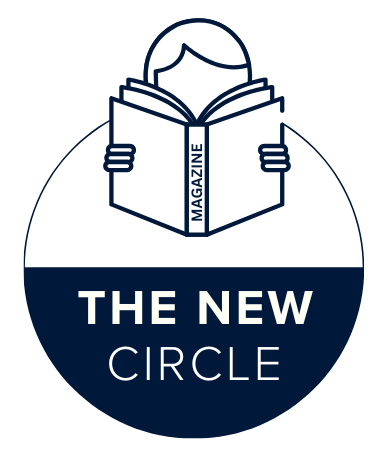In a visually driven world, concept art represents the creative core of nearly every popular aspect of entertainment, including AAA video games, big-studio feature films, and immersive AR/VR experiences.
Choosing the right concept art school goes beyond the curriculum. It requires embracing not only the school’s curriculum but also the ecosystem of talent, industry ties, and job opportunities in that geographic region.
In this guide, we will map out the global landscape, with special emphasis on Singapore, now emerging as a regional leader in creative education in Southeast Asia.
The Global Landscape of Concept Art Education
To better understand what contributes to a successful program, see who is already introducing new talents. Each year, The Rookies publishes global rankings of creative media schools across categories, including Concept Art & Illustration. In 2024, over 6800 student submissions from dozens of schools were evaluated.
Among the contenders are institutions known for the depth of their schools’ concept art pipelines, such as Cestar Collège / Syn Studio (Canada), which was ranked globally as one of the top schools for concept art.
Such rankings help create benchmarks for quality, depth of student work, degree of market-readiness of portfolios, and the relationship of school curricula to entertainment production benchmarks. However, pursuing a concept art career is more than simply ranking, it is about how successfully the school bridges technique, storytelling, software proficiency, and market horizons.
READ ALSO: How Online Tutoring Makes Chemistry Easier for Struggling Students
Why Singapore is the Popular Destination for Studying
It is thus hardly surprising that Singapore is increasingly on the radar of students in Asia, more than ever, seeking quality visual arts and concept art education. There are many reasons for this:
- Creative thinking prowess
In PISA 2022, Singapore scored 1st out of 64 education systems in creative thinking.
This is indicative of the base culture and suggests that the students can reason visually and have the capacity to ideate and apply original, novel forms of thinking.
- Strategic investment in arts & creative sectors
From 2016 to 2022, Singapore’s government increased its funding to the arts and heritage sector from SGD 420 million to SGD 502 million.
Moreover, the establishment of the University of the Arts Singapore (UAS) through the merger of the Nanyang Academy of Fine Arts (NAFA) and LASALLE College of the Arts signals a structural commitment to raising standards in arts education.
- The incorporation of design thinking into education
Singapore is promoting “design thinking” and creativity and originality of all kinds across its curricula at all tiers of education, as well as in private corporations and government departments, in a collaborative way.
This better bridges the gap between theory and creative applied work.
- The expanding education market
The education market in Singapore is also forecast to remain strong, worth USD 3.5 billion, according to recent reports.
This supports the notion of not only mainstream academia but niche creative-type educational growth.
All this suggests that, by 2026, Singapore is likely to be one of the preferred regional hubs for aspiring concept artists.
Leading Concept Art & Creative Media Schools in Singapore
Here is a selective list of institutions in Singapore offering strong pathways in concept art, game art, visual media, or related fields. It is not an exhaustive list, but highlights those with some reputational weight.
- MAGES Institute of Excellence
A premier creative-tech institution with a Diploma in Concept Art and Entertainment Design as its flagship program. The one-year diploma course encompasses essential skills such as visual storytelling, environment and character design, and entertainment workflows. Lecturers are industry professionals from the gaming and film industries, and MAGES has consistently been recognised as one of the leading global creative-media schools by The Rookies. MAGES also offers courses in Game Art, 3D Modeling, and AR/VR placement, thus solidifying its credentials as one of the most specialised entertainment design campuses in Southeast Asia.
- 3dsense Media School
A globally recognised digital-arts campus with a one-year diploma in Concept Art and Illustration as its flagship program. 3dsense emphasizes portfolios suitable for the industry and has consistently ranked in the top 10 of The Rookies reports. 3dsense (meaning full-sense) graduates have experience working in leading production studios via the gaming and VFX sectors.
- Nanyang Academy of Fine Arts (NAFA)
Now an important component of the newly formed University of the Arts Singapore (UAS), NAFA has programmes in Foundation and in Advanced areas of study in Fine Art, Design, and Media. While not a pure concept-art school, its design and visual media streams provide students, upon graduation, with strong artistic foundations for studies in the concept-art domain.
- LASALLE College of the Arts
LASALLE is now also part of the UAS, offering undergraduate courses in Animation, Design Communication, and Fine Art. Its integration with the UAS benefits the collective course presence, thus lessons across traditional formats through to those such as motion design and digital production are effective in terms of the proposed working pathways in concept-art development.
- Raffles Design Institute
A well-known, long-standing design education institution in Singapore offering courses in Interactive Media, Animation, and Game Design. The areas of interactive communication, digital illustration for communication, and user-experience design provide students with opportunities to later move towards pathways in entertainment and concept art through their course validator years.
- MAD School
While not purely entertainment-oriented, MAD School emphasizes visual storytelling, advertising design, and creative communication. These aspects are important foundations for would-be concept artists seeking a broader introduction to digital media concepts and philosophies.
Choice and preparation advice
Begin small and build up your scale. If the whole idea of the diploma frightens you too much, why not try some short courses (either locally through MAGES or studios) to see if you like it?
- Portfolio building early. Start with prop sketches, location, characters, and narrative scenes, building before you get enrolled.
- Talk to the alumni. Speak to graduates from the school you are considering entering. What do they say about job placements, studio readiness, and hard times?
- Check for upgrade mats. Some diplomas ladder onto bachelor’s degrees or international transfer.
- Realistically budget. Softening the costs of tuition and living expenses, materials, and licenses of course apps.
- Don’t neglect the soft skills. Communication, critique culture, client collaboration, and pitching are just as valuable (if not as immediately obvious) as your ability to draw.
Conclusion
Choosing where to study your concept art in 2026 is an important investment in your future as a creator. Although there are many excellent global institutions with a strong reputation and depth of study, the ones proposed in Singapore represent an increasingly viable and strategic regional hub for education in the Asia-Pacific region.
With its government support, creative infrastructure, and institutions like MAGES Institute pushing forward, it offers compelling opportunities — especially for students in Asia.
YOU MAY ALSO LIKE: From Robotic Drafts to Natural Writing: How AI Humanizers Like CudekAI Transform Content

